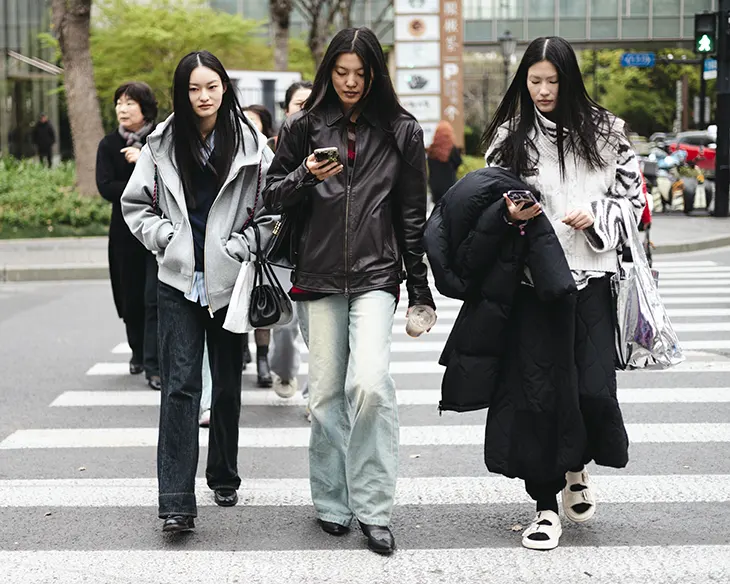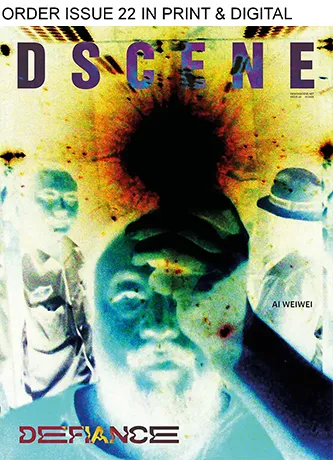
What if your limited-edition streetwear could do more than just make you look good? What if it could unlock exclusive experiences, prove its authenticity beyond doubt, or connect you to communities that extend far beyond fashion? Across the industry, brands are experimenting with blockchain technology; where every piece of clothing comes with a digital twin that’s reshaping how we think about ownership, loyalty and what it really means to wear your values.
This isn’t just another tech trend. We’re watching streetwear evolve from simple transactions into genuine relationships – ones that reward loyalty, guarantee authenticity, and blur the lines between physical and digital identity. The quiet change is reshaping fashion from the ground up.
Solving fashion’s authenticity crisis
Sadly, counterfeiting has been an issue in the streetwear industry since the beginning and, for many consumers, it is impossible to know whether the piece they ordered online for an outrageous price is real or fake. The streetwear industry is looking toward Solana price blockchain technology for answers and is establishing unbreakable links between physical items and their digital certificates of authenticity.
Alexander McQueen’s MCQ label pioneered this approach, becoming the first fashion brand to have an entire collection traceable on blockchain through their partnership with Everledger. Every MCQ garment receives a digital twin that tracks its complete lifecycle, from design to manufacture to ownership history. VeChain has taken a similar approach with luxury brands like Givenchy and H&M, using Near-Field Communication (NFC) chips and blockchain to record every step of a product’s journey.
Arianee focuses specifically on luxury goods authentication, providing blockchain-backed digital certificates that serve as immutable proof of authenticity, provenance, and ownership history. These solutions address a fundamental problem: in an industry where counterfeiting costs brands billions annually, blockchain creates authentication that can’t be faked.
Brands like Krypt are applying this model to streetwear, pairing physical items with Solana NFTs that serve as digital birth certificates. The approach proves each piece is one of a limited run, not a basement-manufactured knockoff.

Loyalty programs reimagined
Traditional loyalty programs are being transformed through blockchain technology. Instead of collecting points or stamps, customers now receive rewards through transparent, automated systems built on blockchain infrastructure.
This technology allows micro-rewards to be made by the user and brands that were previously impossible in consideration of transaction costs. Blockchain networks offer transaction costs below a cent, meaning brands can reward micro-actions like social media actions, or community actions without incurring prohibitive transaction costs.
Fashion for Good has worked with companies like Adidas and Kering through the use of blockchain to create insights into sustainable practices through their ‘Good Fashion Guide’, with an abundance of transparency. This approach turns customer engagement into stakeholder participation, where being a customer evolves into being part of the brand’s ecosystem.
Some streetwear brands are experimenting with reward systems that provide luxury experiences, cash rewards, or exclusive access through digital methods. The transparency of blockchain and fairness through smart contracts eliminates the need for administrative costs.
Digital fashion meets physical reality
The integration extends beyond authentication into wearable digital assets. NFTs associated with physical fashion items can be worn in virtual environments like Decentraland, used as AR filters, or displayed through platforms that bridge digital and physical fashion.
Research indicates nearly half of Gen Z shows genuine interest in digital fashion for their avatars – not as vanity, but as identity expression.These digital assets frequently come with tangible perks: early access to future drops; voting rights for future designs; or exclusive communities.
Loomia offers another innovative model, embedding flexible circuits into fabrics and using the blockchain to allow users the right to data ownership while providing a way to customize and access connected textiles. This fusion of fashion and technology creates entirely new possibilities for interactive clothing.

Why blockchain networks matter
The blockchain infrastructure that you choose has a major impact on user experience. Speed is key in fashion, which so often relies on time-focused drops and instantaneous rewards, to deliver an engaging or interactive experience. Networks that can offer faster transaction times will increase the ability for the experience to be seamless and not feel like a “crypto science experiment.”
Transaction costs are equally important. A $50 hoodie shouldn’t require significant minting fees that break the economic model. Networks with minimal transaction costs make the entire experience feasible and accessible.
Environmental considerations increasingly influence brand decisions. As fashion companies face pressure to meet aggressive emissions targets, energy-efficient blockchain networks become strategic necessities rather than just marketing advantages.
The sustainability connection
Companies such as Ecoalf highlight how blockchain can improve transparency in sustainable practices by showing consumers what recycled materials are used and exactly how they were sourced. By tracking these materials and their journeys on the blockchain, this approach provides a level of visibility into the environmental impact of products that was not previously possible.
The trend of transparency follows the increase in demand for sustainable fashion and consumers demanding environmental claims with verification. Blockchain provides the immutable record-keeping needed to substantiate sustainability marketing with concrete data.

Looking forward
The fusion of streetwear and blockchain addresses fundamental industry problems: counterfeiting, shallow customer relationships, and the disconnect between digital and physical identity. Successful implementations enhance rather than complicate the customer experience, with technology fading into the background.
Not every blockchain fashion project achieves this balance. Some just stick QR codes on tags and insist that it is innovation. Those who are successful have used technology to provide authentic value through trust, community and experiences.
We are seeing fashion brands understand that loyalty is not just bought – it is earned by trust, authenticity and experiences that are shared. As more brands experiment with these models, expect the novelty to diminish while utility becomes paramount. The future isn’t about buying clothes with cryptocurrency – it’s about buying into communities, stories, and values that extend far beyond what you wear.
The quiet revolution in streetwear represents a broader transformation in how brands and customers relate to each other, with blockchain technology serving as the infrastructure for more transparent, authentic, and engaging relationships.
Images from Street Style at Shanghai Fashion Week – see full article here.



















